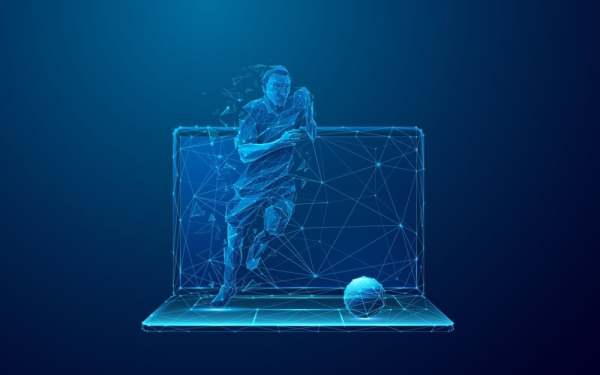
David Hicks: It’s always great to be able to speak to potential investors when you don’t need the money and it’s even better if the investors come to you! We have been in revenue for three years now and can show around three times year-on-year growth.
The recent funding round came just nine months after our first external funding round, and it was done with significant scaling in mind, and practically speaking we really liked the approach of the investors and the vision we shared with them.
The funding will support Eyeball.Club’s expansion into the key US and Latin American markets plus accelerate our development of the technology in particular our AI initiatives in computer vision and analysis algorithms.
DH: Firstly it is important to buy into two truths that are at the core of Eyeball’s mission. One, we believe “Talent is Everywhere” and Second, we believe “Visibility creates Opportunity”.
It should not matter where you live and play, it is not because you were lucky enough to be in some location that you have talent, but the unfortunate reality has been that your chances of being scouted have historically been significantly higher if you are playing in certain cities and countries. So Eyeball’s base mission is to give visibility to as many players as we can regardless of their location or circumstance.
For talent to be discovered their first needs to be video. It’s really obvious but scouts need to watch a player play football, and the more full match videos that are available the more confident a scout can be in his assessment of that player. Full match video is the backbone of the Eyeball platform, and from the thousands of videos, we needed to develop computer vision technology to derive data on the performances of the players.
The system automatically tracks the players’ movements and identifies actions. This data can then be analysed in a number of ways by recruitment teams, giving some scientific methodology to the assessment of a player’s skill and potential to develop.
This combination of AI-powered video analysis and data analytics enables clubs to gain an in-depth perspective on emerging talent across many global markets uncovering potential talent that would not be visible or possible through traditional scouting methods.

DH: Football is truly a global sport, followed and played by billions of people across every continent. The stratospheric emergence of generational icons like Cristiano Ronaldo and Lionel Messi has accelerated the popularity of the sport in the US, and it is experiencing a sustained period of exponential growth.
Players from Pele, to David Beckham and now Messi, have helped the Major League Soccer (MLS) mature to where it is now, attracting more international talent in players beginning and closing out their careers. In turn, youth participation in soccer has increased substantially, especially with girls, so football now competes seriously for attention against other sports like basketball, American football, and baseball.
The 2026 FIFA World Cup (co-hosted by the US, Canada, and Mexico) is expected to further boost interest in football and provide more opportunities for growth in talent and fan engagement so it’s an exciting time to be expanding our presence in this territory.
DH: I think there is a common theme across the sports that is important, and that is scouts want to be able to watch much more of the play than a highlight reel. We often joke that you can make almost anyone look good in a highlight reel.
Scouts need to see the good and the bad, and in a team sport what happens off the ball is as important as what the player does when they have the ball. So different sports have developed different metrics that are proven to be valid for their specific case, but they all require some index and means of measurement.
This is again where we return to the importance of computer vision, we watch closely to see what is being innovated in other sports and follow how other tech companies utilise AI machine learning algorithms to capture and interpolate data.
DH: There are several ways that AI has been able to transform scouting. Firstly, computer vision is and will increasingly be transformative. There was a transformative moment in the development of the Tesla car company when they made the challenging decision to go all in with computer vision to be the basis of their autonomous driving technology, and I am sure that our decision to follow that same route will be equally significant.
Despite the appeal of wearables like GPS trackers, the market has found adoption far from easy and that technology we feel has real practical challenges to scale up. Our AI computer vision is already advanced enough to track players and balls from non-professional cameras, i.e. not broadcast quality, and we are well on the way to accurately identifying events that happen on the field.
The tracking data means we can calculate speed, distance covered, no of sprints, etc. and we can do this at a fraction of the cost of current wearable tech.
The next application of AI is in intelligent search. Eyeball already has the biggest video and player database of elite youth players on the planet, and the amount of data that can be derived from the 2,000 games per week that we capture provides a wealth of potential insights. We have data scientists working on training our own AI agents to interface with this data in ways that provide the industry with valuable insights.
Through collaboration with other technology partners, we hope to broaden the scope of the analysis and insights that we provide and the future of this is not only serving the scouts and recruitment teams but the players themselves, who can learn and improve based on newly available information.
One important factor that AI is facilitating is speed. The recruitment business is very competitive and by automating repetitive tasks, such as video analysis scouts can focus on more strategic decisions around talent identification and be ready to move quickly if needed.
Finally, the use of AI has meant that the geographical reach of football scouting has no limit: AI allows clubs to scout players from remote locations globally, breaking down national barriers to talent identification that are significant limiters with traditional scouting methods.

DH: As we continue to refine our AI-driven system, we will be able to match young players to specific archetypes of top international stars. For example, the system will identify players who exhibit characteristics of:
Below are some of the innovations we are likely to see in the industry if AI continues on its current path…
DH: 18-year-old French winger Rayan Djahl moved from Lyon Laduchère to Juventus Turin’s reserve team last summer. He was scouted and recruited through Eyeball.Club.
Other examples of such transfers across Europe include 17-year-old Norwegian winger Daniel Skaarud, who was spotted playing for Norwegian side Lillestrøm before transferring to Ajax’s academy, and 19-year-old Ivory Coast defender Assane Ouedraogo, who moved from Ivory Coast club FC San Pedro to MLS club Charlotte FC.